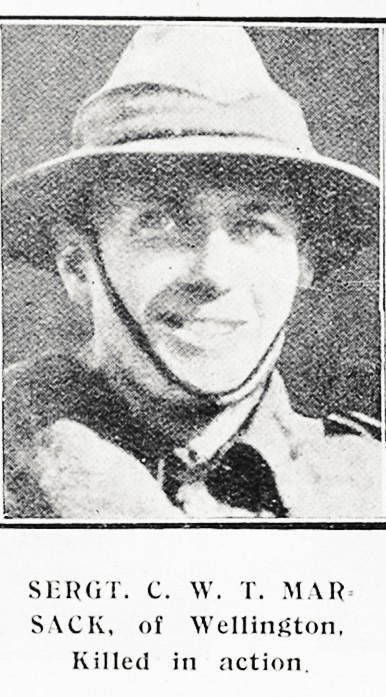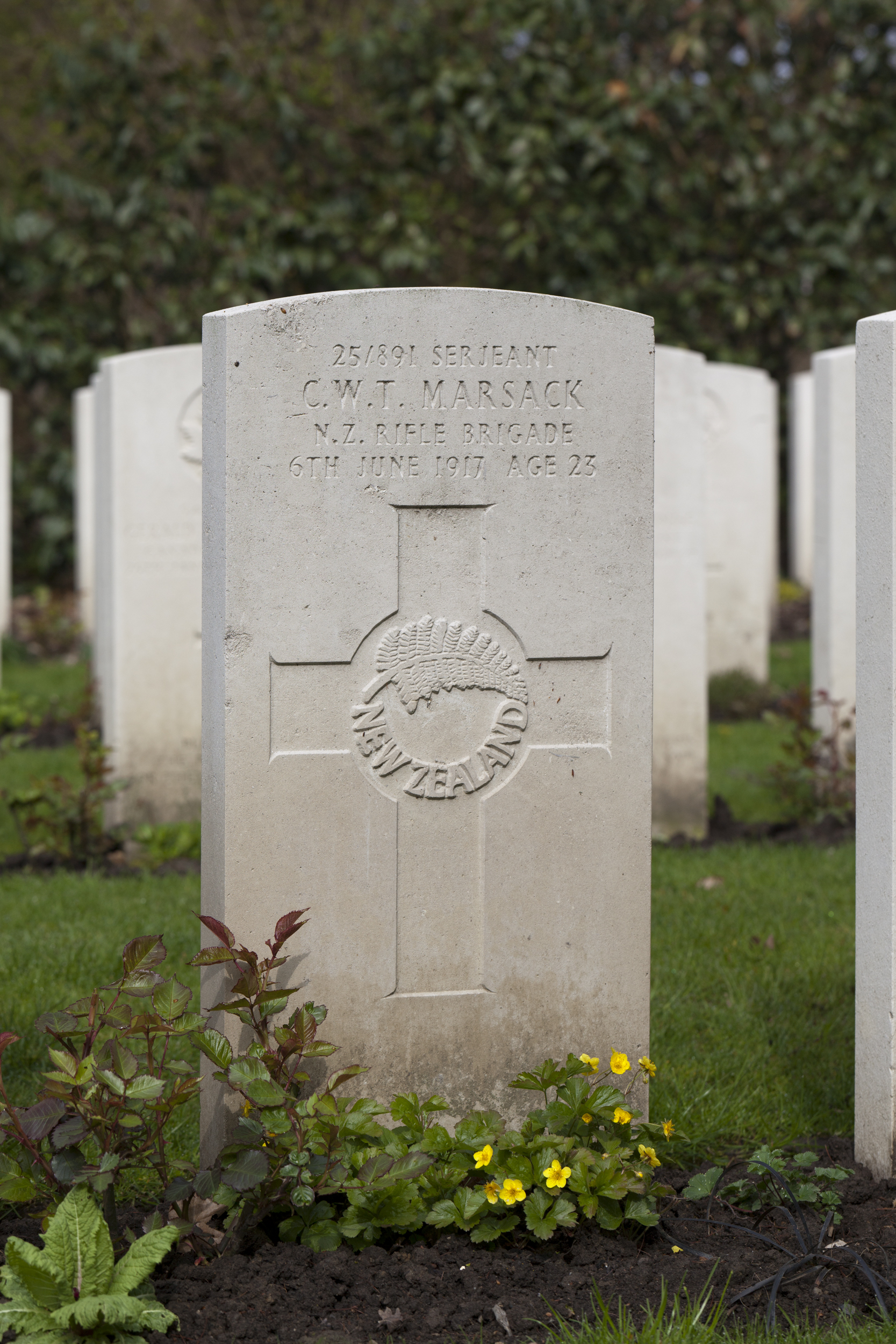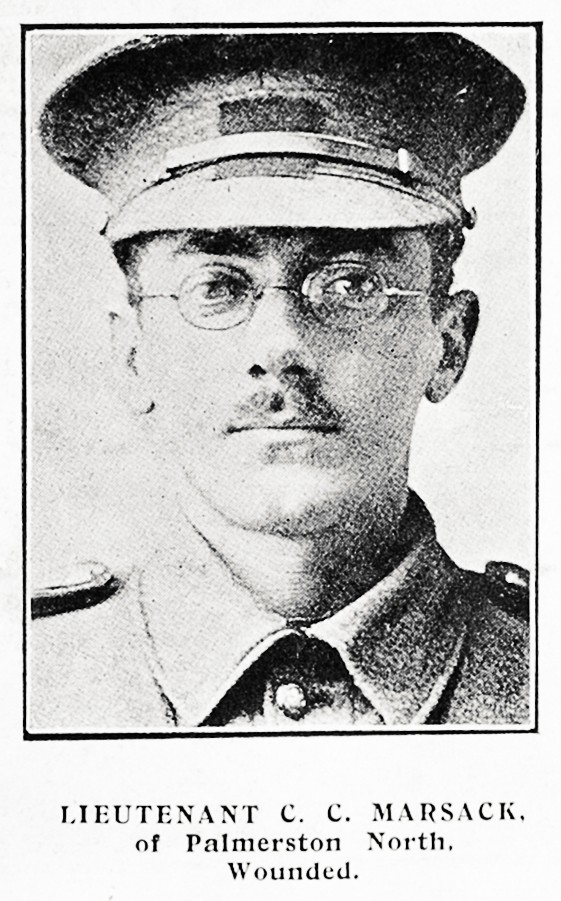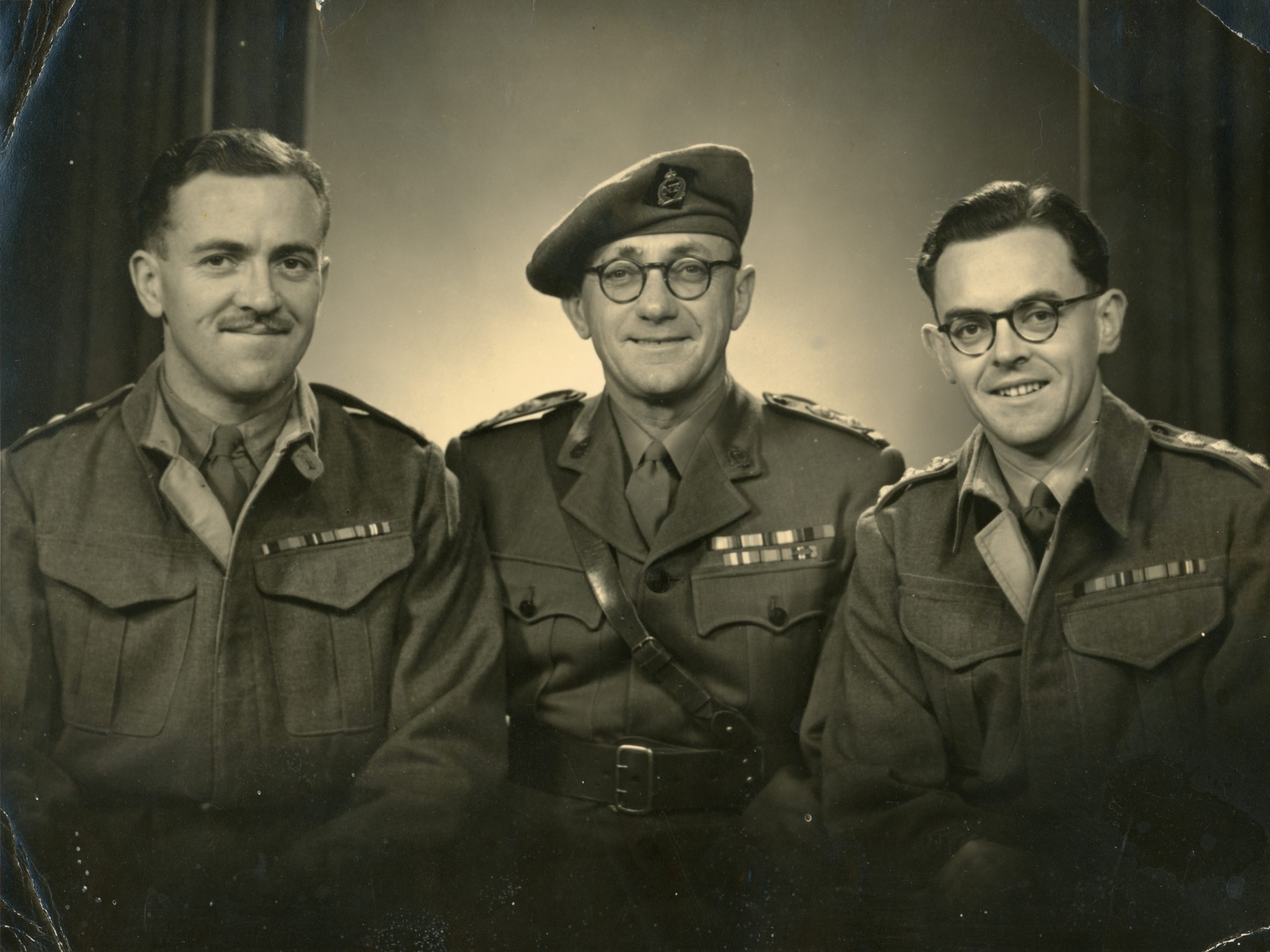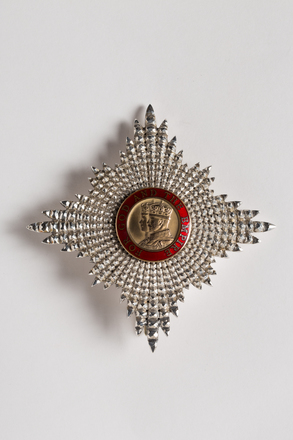WW1 Cyril William Trew Marsack (25/891) and Charles Croft Marsack (WWI 24/657, WWII 38625)
“The Marsack family involvement in war spans six generations, dating from the Peninsular Wars of the early nineteenth century to post-World War Two disturbances in the Middle East.” [1]
Cyril William Trew Marsack (25/891)
Cyril William Trew Marsack was born in Christchurch in 1894. He was the second son of Mary Ann Marsack and Inspector Richard Marsack of the Wellington Police Force. There were four children in the family; their eldest son, Charles Croft Marsack (24/657 and 32625) served in both World Wars, and two daughters, Marie Augusta Collinwood Baker and Constance Lovegrove Marsack.
Cyril attended Grafton School and then Auckland Grammar School for three years from 1908. After leaving school, he worked as a Clerk for the Northern Steam Ship Company. He was a member of the College Rifles Rugby Union Football and Sports Club,
At the time of his enlistment on 12 October 1915, he was living at Gordon Road, Mt Eden, Auckland, and was described at being 5 ft 6 inches tall with blue eyes and brown hair. [1]
He sailed from Wellington on 5 February 1916, for Suez 25 March 1916 then transferred to France on 7 April 1916 as a Corporal with the 3rd Battalion, C Company, New Zealand Rifle Brigade, the same Brigade as his brother Charles Croft Marsack (24/657 and 32625) had joined in April 1915.
Cyril contracted measles and was hospitalised in France and re-joined his unit on 21 July 1916. On 25 September 1916, he was promoted to Sergeant. In March 1917, he contracted mumps and was in hospital again until 14 April 1917. He returned to his unit on the Western Front near Messines, where early on the morning of 7 June 1917, huge mines that had been placed in tunnels under the German lines by the Allied army tunnellers were exploded. Almost immediately, New Zealand troops of the 2nd and 3rd (Rifle) Brigades left their trenches and advanced towards the ridge in front of them, on which lay the ruins of Messines village. Australian and British troops moved forward on their flanks.
The New Zealanders paid a heavy price for the success at Messines: by the time the New Zealand Division was withdrawn two days later, it had suffered 3700 casualties, 700 of them fatal, including Cyril William Trew Marsack (25/891) who had died on 7 June 1917. [2] He had been marching to enter the forward trenches in preparation for the battle of the 7th when he was killed by German artillery fire at age 23. [3]
Cyril was awarded the British War Medal (1914-1920) and the Victory Medal. He is buried at Berks Cemetery Extension, Comines-Warneton, Hainaut, Belgium III. A. 24.
There is an obituary in the Auckland Grammar School Chronicle, 1917 Third Term, p. 18, and he is remembered on the following memorials: Auckland Grammar School War Memorial, Memorial roll, St Paul’s Church, 25 Symonds Street, Auckland; Roll of Honour, College Rifles, Rugby Union Football and Sports Club, Remuera, Auckland and Auckland War Memorial Museum, World War 1 Hall of Memories.
Charles Croft Marsack (WWI 24/657, WWII 38625)
Charles Croft Marsack was born in Auckland on 7 May 1892. He was the eldest son of Mary Ann Marsack and Inspector Richard Marsack of the Wellington Police Force. There were four children in the family, a younger son Cyril William Trew Croft (25/891) and two daughters, Marie Augusta Collinwood Baker and Constance Lovegrove Marsack.
Charles attended Auckland Grammar School and Auckland University College (now the University of Auckland), gaining a degree in law. He was practicing as a solicitor at the time of his enlistment on the 28 April 1915. [1]
He sailed for Suez, Egypt on the 9 October 1915 arriving on 22 November 1915 as a Sergeant, C Company, New Zealand Rifle Brigade, 2nd Battalion; the same Brigade as his brother. He was promoted to 2nd Lieutenant and then Lieutenant and worked as the Quartermaster coordinating equipment, materials, and systems from Headquarters to the units in the field.
After the war, on the return voyage back to New Zealand, a system of voluntary educational classes was organised for the soldiers to help them back into civilian life. Agriculture was most popular topic and many other topics such as, fruit farming, beekeeping, plumbing, electricity, bookkeeping, motor mechanics, law, English, and French were provided. Charles lectured on French. [2]
Charles was married in 1918 in London to a young French woman, Ninette Padiou. They had two sons; both of whom served in the Second World War. They were Philippe Charles Marsack (RNZAF then Army) and Raymond Oliver Marsack (NZ402264)
Charles continued practicing as a solicitor in Masterton after the war and was Mayor of Taumaranui, from 1923 to 1925.
Charles served during the Second World War, being promoted to Major in 1940 and then to Lieutenant Colonel. He was on the Supplementary Roll at Headquarters of the Second New Zealand Expeditionary Force. He was Mentioned in Despatches (MID), published in London Gazette 23 May 1946 [3]
During his civil career, he was the Chief Justice of Samoa and Judge of the Fiji Court of Appeal. He was awarded a CBE in 1962, which was conferred by the Queen during her visit to Fiji in January 1963 and awarded his KBE in the New Year’s Honours 1981 (gazetted 31 Dec 1980).
He published two books `Teach Yourself Samoan’ and ‘Samoan Medley’ and his diaries of his experiences in both World Wars are deposited with the National Library of New Zealand. He died on 3 October 1987. [4]
During his long military and civil career Charles Croft Marsack was acknowledged for his work with the following awards: 1914 Star (5 August – 22 November 1914 clasp), British War Medal (1914-1920), Victory Medal, 1939 – 1945 Star, Africa Star, Italy Star, Defence Medal, War Medal 1939-1945 with oak leaf, New Zealand War Service Medal, MBE and later KBE (Knight Commander of the Most Excellent Order of the British Empire).
Charles is remembered on the Roll of Honour at – Auckland Grammar School, and Auckland University College (now University of Auckland).
G. Ralph
April 2020
